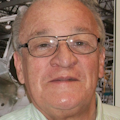It’s not always easy to be upbeat about being an aviation mechanic these days. The recession has been particularly brutal for aviation and mechanics have more than taken their share of hits. Outsourcing, layoffs, increased overtime, I’ve written and spoken about all these issues for some time. And I certainly won’t downplay them here.
But in spite of these bad times, I see an A&P mechanic as having significant opportunities for success, if he or she sees the A&P as a license to learn. In school, we learn the basics of aviation maintenance; generally, the theory of how different systems work and hands-on experience working with typical systems. And, of course, we learn the backbone of maintenance: reading, understanding, and applying the maintenance manual. This education gives us the background to take and pass the FAA’s A&P exams. And, yes, I still remember how proud I was when I got my A&P.
Just the beginning
But getting an A&P is just the beginning of a career, today as much as yesterday. When I got my first job working for United at JFK Airport, I was back in the classroom before I turned my first wrench: 40 hours of intensive training on United’s procedures, including use of their maintenance manuals and their logbook sign-off procedures.
Then I was sent to the hangar to work under the direct supervision of more experienced mechanics. There is nothing like the thrill of working on your first real engine that’s going on a real aircraft and not just a practice one that you use in training. Even all these many years later, I still remember that first United engine, removing the cowling, getting in, getting dirty, and actually accomplishing something. In my case, it was a P&W R2800 engine on a DC-6 aircraft.
One of my early lessons working at United was that the aviation industry introduces cutting edge technology faster than other industries. Back then it was things like advanced hydraulic fluids which came with their own set of issues and requirements to the transition from DC generators to AC electrical systems which included synchronized buses. Today, it is composite materials, digital avionics systems with mini-computers running everything on the airplane. To get ahead, A&P mechanics need to keep up with the changing technologies. For me, no sooner had I finished my Intro to United that I was back in the classroom again learning about the then soon-to-be-introduced 727.
Lifelong learning
The pattern of lifelong learning as an A&P began early in my career and continues to this day. In fact, I just signed up for a regulatory review class so I can keep current with any regulatory changes. Training opportunities may be provided by the company you work for or the union, if you have one, or may be available from outside providers at your own expense. Online training is growing and expanding and offers the flexibility of learning at your own pace and at your own convenience. Regardless of how you get the training, increasing your knowledge, skills, and abilities opens additional opportunities in a competitive market.
Education is an area where I believe you are never too young or too old. And that is certainly true for any holder of an A&P certificate. AMT
John Goglia has 40 years experience in the aviation industry. He was the first NTSB board member to hold an FAA aircraft mechanic’s certificate. He can be reached at [email protected].
About the Author

John Goglia
John Goglia has 40+ years experience in the aviation industry. He was the first NTSB member to hold an FAA aircraft mechanic's certificate. He can be reached at [email protected].
John Goglia is an independent aviation safety consultant and Adjunct Professor at Vaughn College of Aeronautics and Technology and regular monthly columnist for four aviation trade publications. He was an airline mechanic for more than 30 years. He has co-authored two text books (Safety Management Systems in Aviation, Ashgate Publishing 2009 and Implementation of Safety Management Systems in Aviation, Ashgate Publishing 2011).